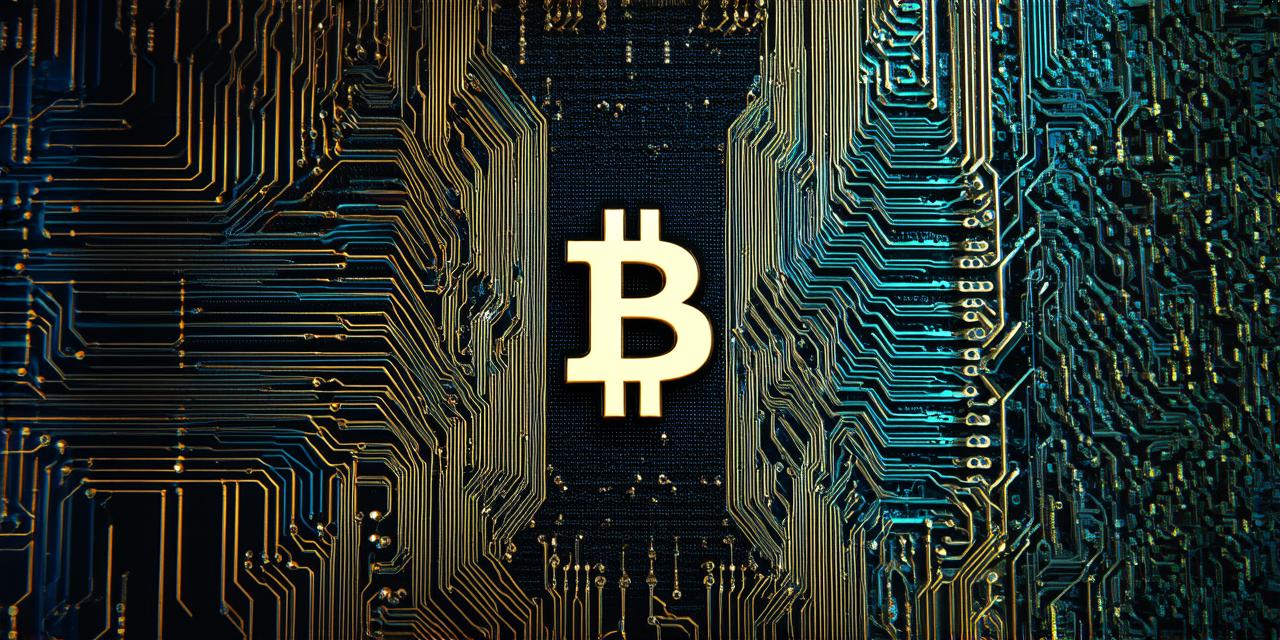Splitting the Reward for Mining Cryptocurrency Transactions in Half: A Game-Changer for the Future of Crypto Mining?
As cryptocurrencies continue to gain popularity and mainstream acceptance, the demand for mining has increased dramatically. While mining can be an excellent way to earn a passive income, it’s also becoming increasingly energy-intensive, leading to concerns about its environmental impact. One possible solution to this problem is splitting the reward for mining transactions in half, which could potentially reduce the amount of energy required while still allowing miners to earn a profit. In this article, we will explore the pros and cons of this idea and examine whether it holds any promise for the future of crypto mining.

Understanding Crypto Mining Rewards: A Primer
Before we dive into the topic of splitting the reward for mining transactions in half, let’s first understand what mining rewards are and how they work. At its core, mining is the process of verifying transactions on a blockchain network and adding them to the ledger. Miners use powerful computers to solve complex mathematical problems, which require an enormous amount of computational power. In return for their efforts, miners are rewarded with newly minted coins or transaction fees in the cryptocurrency they’re mining.
For example, if you mine Bitcoin, you will receive newly minted Bitcoins as your reward. The exact number of coins you receive depends on the difficulty of the mining problem and the current market price of Bitcoin. Similarly, miners who mine Ethereum are rewarded with Ether tokens, while miners of other cryptocurrencies receive their respective tokens or transaction fees.
The rewards for mining cryptocurrency transactions are designed to incentivize miners to continue verifying transactions and adding them to the blockchain. By providing a steady stream of rewards, miners are more likely to continue investing in the network, which helps to secure and stabilize it.
The Environmental Impact of Crypto Mining: A Growing Concern
Despite its many benefits, cryptocurrency mining has become increasingly energy-intensive over the years. This is because miners need to use powerful computers to solve complex mathematical problems, which requires an enormous amount of electricity, which can have a negative impact on the environment.
In fact, according to a report by Cambridge University, cryptocurrency mining consumes more electricity than countries like Denmark and Switzerland combined. Furthermore, the environmental impact of mining is likely to increase in the coming years as more miners enter the market and competition for block rewards intensifies.
Pros and Cons of Splitting the Reward for Mining Transactions in Half
There are several reasons why some experts believe that splitting the reward for mining transactions in half could be a game-changer for the future of crypto mining. First, by reducing the amount of energy required to mine cryptocurrencies, we could potentially reduce their environmental impact. This could help to address one of the main concerns about the sustainability of blockchain technology.
Second, splitting the reward for mining transactions in half could potentially make it easier and more cost-effective for miners to enter the market. Currently, new miners must invest a significant amount of money in hardware and electricity to be competitive in the mining game. By reducing the amount of energy required to mine cryptocurrencies, we could potentially level the playing field and make it easier for small-scale miners to get started.
Finally, splitting the reward for mining transactions in half could potentially encourage more people to use cryptocurrencies as a form of payment. If consumers know that their transactions are being verified in an environmentally friendly way, they may be more likely to adopt and use cryptocurrencies.
Case Studies and Personal Experiences: Real-World Examples of Splitting the Reward for Mining Transactions in Half
Despite the potential downsides, there are some real-world examples of countries and organizations experimenting with splitting the reward for mining transactions in half. One example is Iceland, which has become a popular destination for miners due to its low electricity costs and favorable climate. In 2018, the Icelandic government introduced a tax on cryptocurrency
